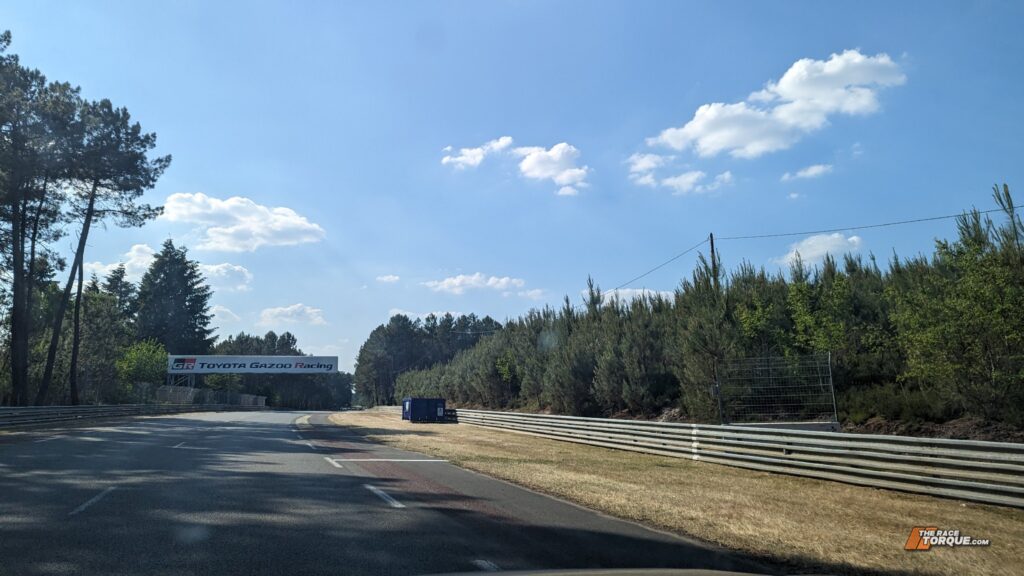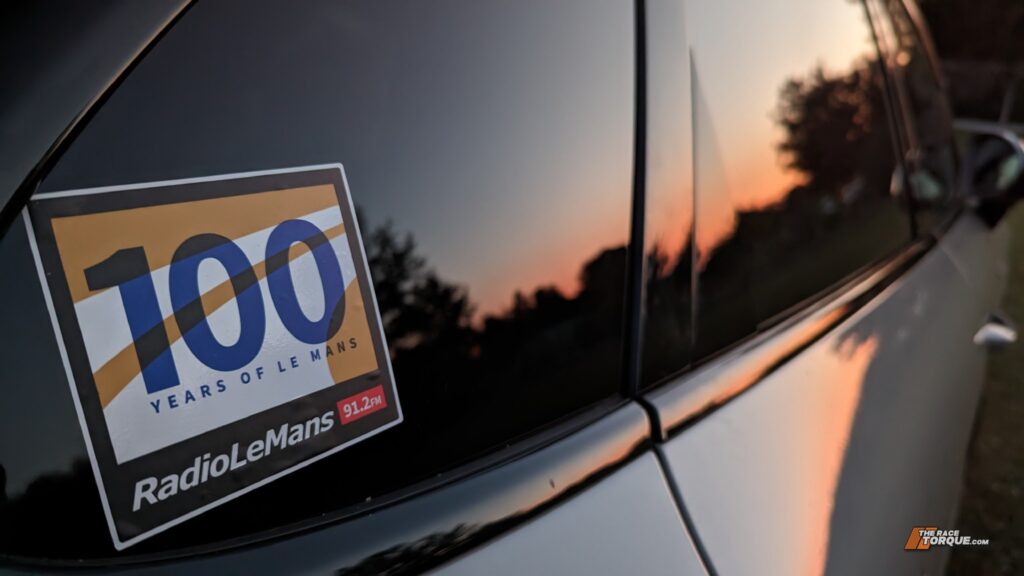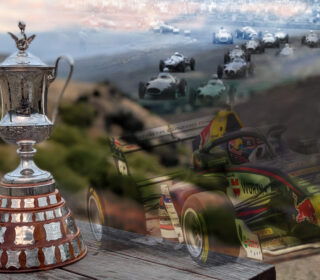LeMans Diary #1 – The Road There

BEFORE WE TALK about the road there, let’s talk about the road in the image above.
What you see there is the old section of the Circuit de la Sarthe, used for decades before safety became more of a concern than the manly men and remarkable women who tackled the world’s most famous around-the-clock enduro each year.
In particular, the section above is the old, fearsome Maison Blanche.
The narrow, single-lane carriageway was the link between the back of the old Le Mans circuit and the pit straight, long before the current Porsche Curves, the Ford Chicane and the Virage de Raccordement were pit in place.
It appears almost exactly as you might remember it in the film Le Mans. No guardrails, the building on the left untouched. On the right is the walling for the newer Porsche Curves. In the past, they didn’t exist: A white house sat on the outside of what was a 200mph approach to a quick left-hander and then the run to the pits, the line and possibly destiny.
It’s a remarkable nod to the old Le Mans, the race that once was. It’s different now, safer, more modern, but like the greatest of all racing circuits, it reeks of character, drips with history and sends chills with the ghosts appearing at almost every corner.
Unlike a lap of Le Mans, however, the road to La Sarthe is not particularly difficult. Once off the Eurotunnel, it’s onto the French Péage – toll roads to you and I. Apparently, the French, being who and what they are, don’t much feel like paying to use their roads, so on a mid-Thursday morning, they remain blissfully deserted.
They are also magnificent. Smooth, quick, 130km/hr limit. Well signed. Speed cameras are pre-warned, but very few people speed – most seem to sit well within the limit anyway. Trucks are the same everywhere and are broadly as selfish here as everywhere else, but once dealt with, it’s back to enjoying a blissfully smooth road and lusciously green vistas around.
It’s also educational: artistic signs pop up ever so often promoting what the region you are traversing has to offer. I was quite keen to detour past Le Mans to Burgandy, however, passing through Camembert was tasty enough…
From Calais, we power the Porsche Cayman eHybrid South, along the coast towards towns with familar names. We see the major fishing port Boulogne-sur-Mer from up on high along the ridge that runs alongside the back of the seaside town.
Further south, the towns become more evocative: passing signs pointing to Dieppe, famous for all kinds of bad things in the Second World War, is a reminder that this area was a very different place to be less than a hundred years ago.
We’re due to head through the industrial town of Rouen, but new pollution efforts put in place by the city mean that any car failing to meet their eco standards, or pay for the privilege, get tolled out of existence if they come within a few clicks of the city.





Instead, we jump off the motorway and head across to Yvetot and then south into the sprawling Parc naturel régional des Boucles de la Seine, which, as you may have guessed, includes a crossing of one of France’s mightiest rivers.
That crossing comes with the truly remarkable Pont de Brotonne bridge, a two-pylon suspension bridge with the motorway hanging hundreds of feet above the river by seemingly thin, almost graceful strands of thick cable spreading wide from the top of each tower. Magic views of the river, Rouen to the left and bucolic countryside to the right are abundant. It’s epic.
From there it’s two and a half hours back on the motorway to Le Mans, which comes into view with first a welcome sign and then a second tourism pointer, though this time it’s not cheese: it’s a pair of Porsche 956s, seemingly at maximum attack.
In the same way you can tell Bathurst is a motorsport town from the moment you arrive, the same is true for Le Mans. There’s no escaping what this city is about.
The Thursday before Scrutineering kicks off in the city centre is typically hectic, the circuit awash with people putting up temporary structures, finishing cabling and sorting logistics for when cars hit the track for the pre-event test on Sunday.
It’s a fascinating first look, the place a mixture of clearly world-class permanent circuit, weekend-only builds and then the slightly disarming, sometimes completely bonkers street circuit fare.
An example: You access the temporary part of the circuit mid-way through the complex known as Tetre Rouge. It’s where Allan Simonsen, a hero to many, lost his life a decade ago this year, his car slamming into a pair of trees on the corner exit. While there is no formal memorial to the Dane, a faded message to ‘Al’ on the tyre barrier is a suitably low-key way to remember our old mate. It’s nice.
Across the road, open now but by Sunday blocked off by Armco barriers and catch fencing, is France’s version of Bunnings. I’m told it’s very good.
Such is the anachronism that is La Sarthe.
It’s very special to be here, and I’ll aim to keep TRT readers up to speed with what we’re doing over the week ahead.
Make sure you tune into Hagerty Radio Le Mans on Sunday for coverage of the test day, plus all the preview content and other stuff already produced. It’s then full on from Wednesday with practice, qualifying, Hyperpole, supports and then the big dance on Saturday and Sunday.
The Bathurst 12-Hour, I am told, is a sprint race by comparison, but I am here for that challenge.







